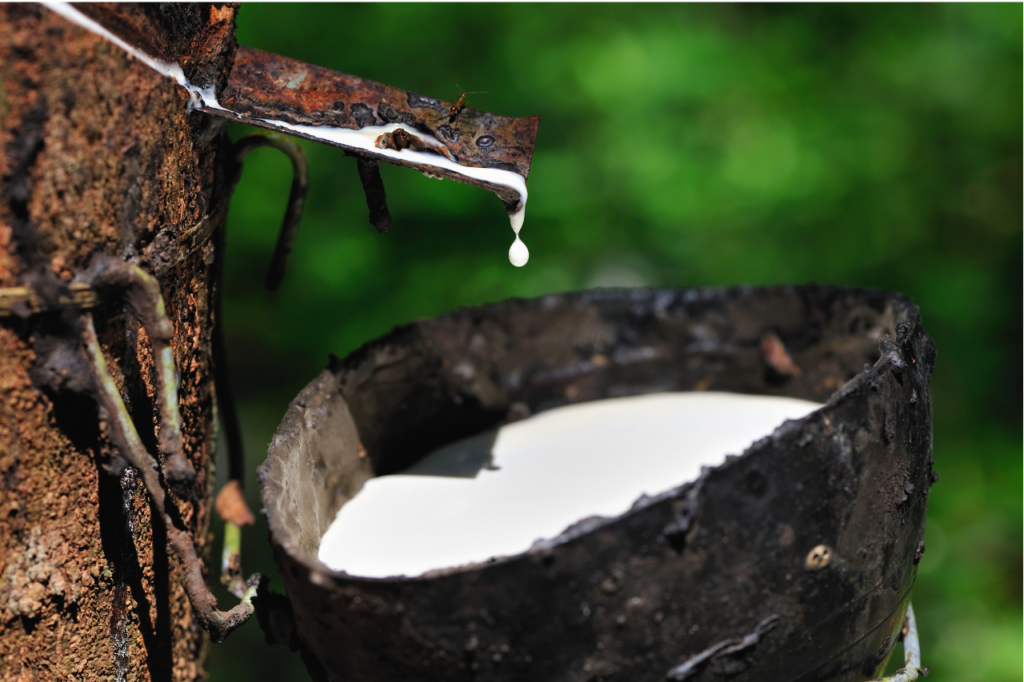

Latex is a natural substance extracted from the sap of rubber trees. As the demand for latex increased during the 20th century and especially during the Second World War, researchers conducted intensive research to develop synthetic latex successfully. Since then, manufacturers have further developed synthetic latex in many areas, such as textiles, plastic products, building materials, and medicine.

Natural latex is best known for being made from the rubber tree Hevea brasiliensis, which grows in tropical areas such as Southeast Asia, West Africa and Latin America. Up to 10% of all plants produce latex, including poppies and fig trees. Even fungi, such as the weeping milk cap, are rich in milky sap or latex. Plants or fungi produce latex as a defence against insects, which helps them seal themselves after damage and prevents insects and other pests from entering their tissues. Latex contains a complex mixture of proteins, starches, oils, tannins and gums, solidifying in air contact. Commercially, latex is harvested by cutting slits in the bark of the rubber tree, which causes the milky-coloured liquid to ooze out and collect. Then, manufacturers add chemicals to prevent the liquid from solidifying. The latex then undergoes several processes before it becomes a finished rubber product.
Synthetic latex is a liquid mixture of polymers made from petroleum products, i.e. fossil oil, produced using several chemicals. Rubber products of this type are usually more robust and stable than those made from natural latex and are often used in, for example, tyres.
People use latex in a wide range of products, including clothing, balloons, rubber gloves, rubber bands, condoms, mattresses, basketballs, and paint binders.

Challenges & Environmental Impact
Rubber trees can be harvested for latex several times a day for many years while acting as a carbon sink(removes greenhouse gases). While rubber trees can be grown sustainably, the rubber industry is known to have caused deforestation and exploitation of biodiversity-rich areas.
Natural latex is biodegradable in its natural pure form.
Synthetic latex is derived from crude oil and faces the same challenges as the entire oil industry, such as the extraction of non-renewable resources, pollution of air and water, use of chemicals, release of microplastics, etc. Synthetic latex is thus a plastic with a long degradation time. This time is only theoretical as it has been around for less than 100 years.
Sources
Impactful Ninja – Are Latex Matresses Eco-Friendly & Sustainable? ![]()
Treehugger – Where Does Latex Come From? ![]()
Wikipedia – Latex ![]()
November 2024, TÄNKOM | Revised November 2024, RETHINK



